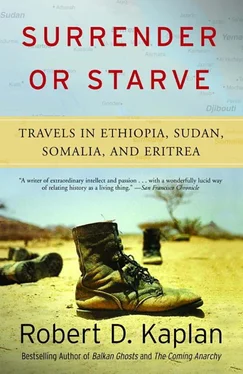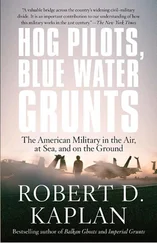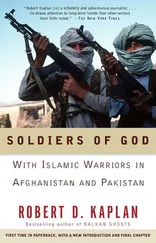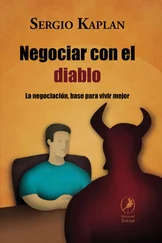As the U.S. media spotlight drifted away from the Horn of Africa in 1979, the Eritrean guerrillas were in retreat, divided among themselves, and only beginning their transformation from a pro-Soviet, Marxist movement to an anti-Soviet, ideologically nebulous one. But the impression U.S. journalists took with them as they moved on to Iran and Afghanistan at the end of the decade remained, even after they returned to Ethiopia in 1984. In the late 1970s, both war and famine had ravaged Ethiopia, but at that time, the media were predominantly interested in the war. By 1984, however, Third World conflicts with heavy Soviet involvement in Angola, Cambodia, El Salvador, and Nicaragua—not to mention Afghanistan—took the sting out of the Eritrean story. So even though Ethiopia’s situation was again a matter of war and famine, this time only the famine got reported because the unprecedented images of masses of people dying of hunger gave the famine story much greater novelty value. Because few journalists bothered to cover the war, most observers still thought of it as just a case of “Marxists fighting Marxists.” Neither Congress nor the Reagan administration had any real way of knowing that the situation had changed because U.S. officials could not enter guerrilla-held areas due to a continued U.S. State Department policy of only recognizing Ethiopian sovereignty in Eritrea.
Nevertheless, although the media had consigned Eritrea to obscurity, major fighting continued in the 1980s, and the nature of the guerrilla movement was significantly altered. The EPLF decided on a “strategic withdrawal” in 1979 and deliberately gave up territory in southern Eritrea, including the town of Keren near Asmara, in order to consolidate a base area in the northern Sahel district around Nakfa. In the meantime, troops were deserting regularly from the Arab-backed ELF, which by mid 1980 boasted only 6,500 troops, while EPLF ranks had swelled to almost 30,000. The same year, fighting broke out between the two organizations, and in 1981, following an EPLF offensive against ELF concentrations in the Barka region of western Eritrea, the ELF was defeated and its remaining troops were driven over the border into Sudan, where they were disarmed. The ELF, although it still has a small following among Eritrean refugees in Sudan, has been irrelevant ever since.
From then on, possessing a secure base area and faced with no other credible enemy except the Dergue, the EPLF strengthened itself in every way. A network of trenches and underground corridors several hundred miles long was constructed. Thousands of educated ethnic-Eritreans came over to the EPLF side after going into exile abroad because of increased repression in Ethiopia. These new recruits, who were brought in by way of Sudan, staffed the hospital and ran the workshops that were being set up in the Orotta area. Many of the recruits were from middle-class, Christian families around Asmara, and their presence further encouraged the Western-oriented drift in EPLF ideology away from its Marxist bearings, which the 1977 Soviet sellout had precipitated.
The last vestige of Eritrean goodwill toward the Soviet Union was wiped out by the Soviet buildup of the Ethiopian army, which was expanded from 65,000 to nearly 300,000 troops, thus making it the largest in black Africa. Using figures from a Central Intelligence Agency report, James A. Phillips, a senior policy analyst for the Heritage Foundation, noted that “Moscow supplied Ethiopia, a state which had only 62 tanks and 27 jet fighters, with over 350 tanks and 70 jet fighters.” “Volunteer” pilots from Cuba, North Korea, and other Soviet bloc states joined the ranks of the Ethiopian air force. More than 2,000 Soviet advisers arrived in the country. In return, the Dergue made the Dahlak archipelago, which was off Eritrea’s Red Sea coast, available to the Soviet navy, and Soviet planes began making long-range reconnaissance flights over the Indian Ocean from the Asmara airbase that the United States had deserted.
This massive assistance program allowed the Ethiopian government to launch its largest offensive ever against the Eritrean guerrillas in February 1982. Called Operation Red Star, it involved fifteen divisions with an estimated one hundred thousand troops and featured the introduction of Soviet-manufactured Mi-24 HIND helicopter gunships into the region for the first time. The offensive was a total failure. The EPLF held all its major positions, and as many as forty thousand Ethiopian soldiers—close to half the invasion force—may have been killed or wounded. Thousands were taken prisoner by the guerrillas, and large quantities of weapons were captured. Another offensive of the same magnitude was launched in 1983, but the results were just as disastrous. While the U.S. public was preoccupied during this period with fighting in Lebanon and Central America, blood was flowing in large quantities in the Horn of Africa, in a war that featured a guerrilla resistance—backed by virtually no one—withstanding one of the largest Soviet arms onslaughts in history. There was only one precedent: the struggle of the Viet Cong against the United States. No other resistance group, particularly not the ones well known to the public, were in the same category. Not even the Viet Cong, who were armed and supported by the Chinese and North Vietnamese and who rarely engaged in set-piece battles like the EPLF did, had chalked up such an impressive record.
Nevertheless, Eritrea was in every respect a friendless nation. The transformation of the Soviet Union from ally to oppressor, the continued hostility of the West, and the ambivalence of the Arabs and the rest of the Third World only reinforced the EPLF’s obsession with “self-reliance” and its relative disdain for other Middle Eastern and African liberation groups. A mania developed in the EPLF around repairing captured equipment and converting it for other uses. Comparisons between the EPLF and other insurgent organizations were treated with contempt. “Has the PLO ever captured an Israeli tank?” asked an EPLF official scornfully, when the question was raised about similarities with the Palestinians.
In early 1984, the EPLF captured the town of Tessenei on Eritrea’s western border with Sudan and overran all government positions eastward up to the Red Sea, thereby gaining the port of Mersa Teklai. War was taking its toll on the land, however. Much of the heavy fighting of the previous years had occurred during harvest season, and to make matters worse, the Ethiopian army was employing the same scorched-earth tactics in Eritrea as the Soviet army was using in Afghanistan. War had restricted the seasonal migration of nomads, which led to the loss of livestock. On account of the security situation, fertile areas of the coast and the Barka plain could not be cultivated. The agricultural balance, always fragile in this corner of Africa where nature is particularly cruel, was destroyed. But when a resultant famine woke the media from their five-year-long sleep, the images that television cameras beamed back into U.S. homes were of a drought-scarred landscape, not a war-scarred one.
Yet from every perspective, Eritrea presents a picture of modern war. The EPLF front line at Nakfa, sixty miles as the crow flies south of Orotta, is a bleak, deforested region brutally cut by landslides and the color of mud. Captured from the Dergue in 1977, Nakfa has been the scene of heavy fighting many times since, leaving the town, which once had a population of seven thousand, a checkerwork of ruins punctuated by a single minaret. Nakfa is sort of a modern-day, African equivalent of Pompeii. The trenches a few miles farther south are perched along the twisting spur of Denden Mountain. Soviet T-55 tanks and five different kinds of artillery lie hidden in manmade recesses. Across the defile, on a similar ridge, are the Ethiopian lines. In some places, the two armies are as close as sixty yards apart, and a pair of low-powered binoculars are all that is necessary to see the individual faces of Dergue soldiers peering through the slits of their own fortifications. In between is a no-man’s-land of minefields, defoliated olive trees whose barks are corroded by napalm, scores of Ethiopian bodies lying like broken toy soldiers, and the uncollected remnants of the November 1985 Dergue attack on Nakfa, in which 6,000 government troops were killed or wounded in repeated predawn attempts to scale the Denden escarpment (the same number of casualties attended the successful 1941 British assault on a similar scarp at Keren, which led to Mussolini’s withdrawal from Eritrea).
Читать дальше












